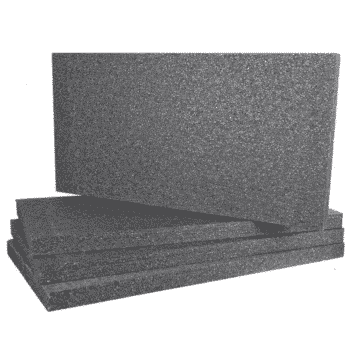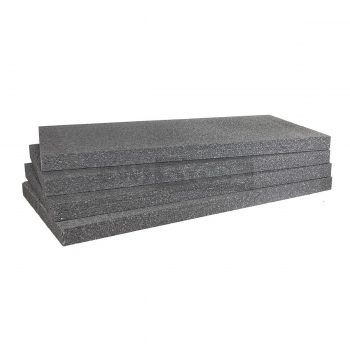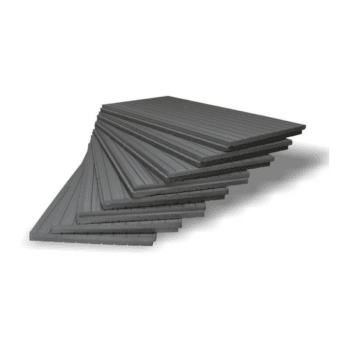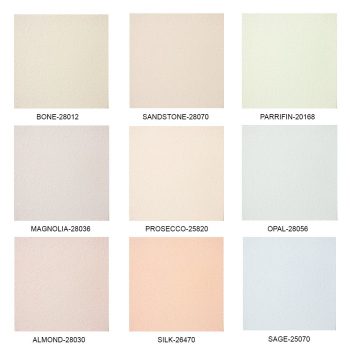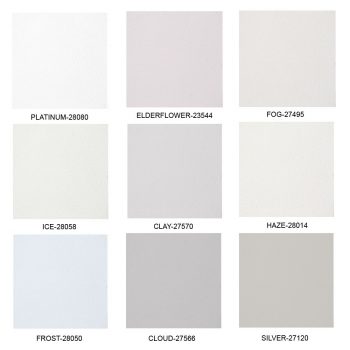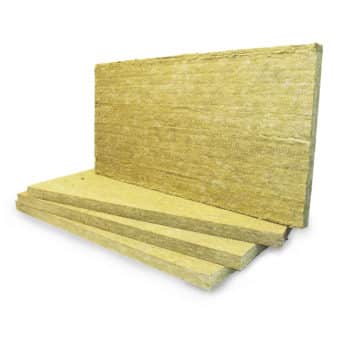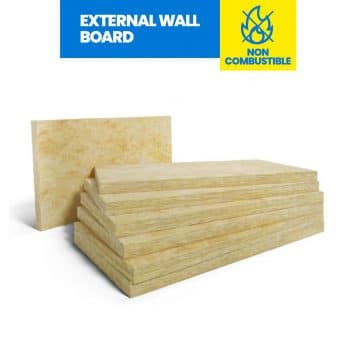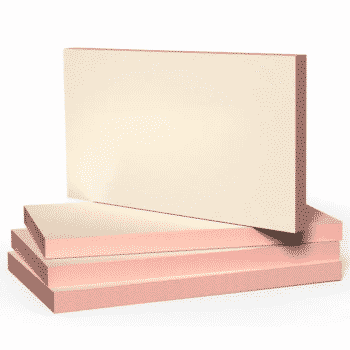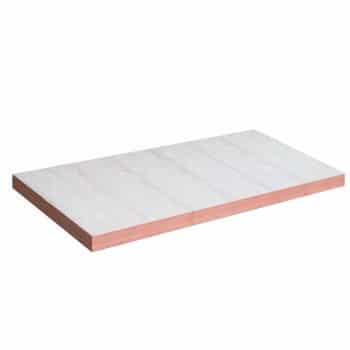EPS Insulation Boards – Everything you need to know!
EPS insulation is one of the most popular external wall insulation materials available on the market. It is great for use in industrial, commercial, and residential insulation projects. There are several reasons for this. Firstly, it is an extremely cost-effective insulation option. It is also a great long-term cost-saving solution for reasons which we will discuss throughout this blog!
In this blog, we will discuss the various benefits of EPS insulation, and why you might want to consider using it as your insulation material of choice! We will discuss some other queries you might have regarding the topic – including ‘what is EPS’, ‘what is the difference between EPS and XPS insulation’, ‘Is EPS insulation waterproof’, and ‘can EPS be used for internal insulation?’
Read on to find out more about EPS insulation boards!
What is EPS insulation Board?
Before discussing the various properties of EPS, it is worth exploring what EPS actually is, its composition, and its uses.
So, EPS insulation board is a type of solid wall insulation material that is used to add a high-performance thermal insulation layer at the centre of your external wall system. They are comprised of Expanded Polystyrene, a type of foam plastic made from solid beads of polystyrene.
At EWI Store, our EPS boards come in a standard size of 1200mm x 600mm but come in a range of thicknesses. For example, 1 eps insulation board can be purchased in thicknesses ranging from 20mm-200mm.
EPS can be used in a multitude of insulation projects as it is an extremely versatile insulation material. This means that it is well suited to all sorts of projects, and a range of different substrate surfaces. For example, EPS boards are compatible with masonry and timber substrates.
When applying EPS, we recommend you use a dual fixing method to fix the boards to the substrate. This typically involves applying adhesive to the board and then using fixings to secure the hold.
-
EPS Insulation (1 board = 0.72m²)
Rated 5.00 out of 5From £141.9 Incl. VATFrom £2.39 Incl. VATFrom £1.99 Excl. VAT
Benefits of EPS Insulation
EPS is a really great insulation option if you’re looking for a cost-effective, lightweight material for your EWI project. We will take a look at some of the various benefits of this product below:
- Cost-effective. An affordable insulation option that saves you money on heating expenses in the long run!
- Highly lightweight, meaning that it is easily transportable, easy to install, and simple to cut to any shape necessary.
- EPS has just as good thermal properties as some of the more expensive insulation materials. It will significantly improve the thermal capabilities of your property.
- Absorbs sound for good acoustic insulation, making it ideal for urban areas.
- Long-term investment. Lowers your gas costs over time.
- Versatile and suited to a range of insulation projects and fixings.
- Environmentally friendly and sustainable insulation option.
- Water-resistant for increased protection from the elements and mildew.
- Non-breathable, therefore well suited for use with thin coat renders. Especially the EWI-075 Silicone Render.
What is the difference between EPS and XPS insulation?
You might have heard of XPS insulation when considering your insulation material options. But what is the difference between EPS and XPS insulation?
XPS and EPS are often confused because they are made from the same polystyrene resin base. However, the manufacturing process is different, which produces slightly different insulation properties.
EPS stands for expanded polystyrene, whereas XPS stands for extruded polystyrene. Because of their differing compositions, XPS and EPS are better suited to different types of projects. For example, XPS has stronger compression strength than EPS. Whereas they both provide relatively similar levels of thermal insulation to your home.
In general, EPS is less expensive than XPS, meaning EPS is a great option if you’re looking to properly insulate your property without breaking the bank!
-
XPS Insulation (1 board)
From £20.38 Incl. VATFrom £10.20 Incl. VATFrom £8.50 Excl. VAT -
EPS Insulation (1 board = 0.72m²)
Rated 5.00 out of 5From £141.9 Incl. VATFrom £2.39 Incl. VATFrom £1.99 Excl. VAT
Is EPS insulation waterproof?
EPS insulation is an incredibly effective insulation board material to use. One of the key reasons for this is that it is highly water-resistant.
Its water resistance is part of what makes EPS insulation board an excellent option for, not only insulating your home, but for protecting it from the elements. This means that you can significantly reduce the chance of incurring water damage to your property’s external wall structure.
Therefore, EPS insulation is a great option if you’re looking to protect your home, keeping the surfaces healthy and free from mildew (organic growth)! This, in turn, will benefit your health as long-term exposure to mould can be harmful.
You can further add to the waterproofing properties of your home by using a render that is highly waterproof. A great option in this instance is either the Nano Drex Silicone Render or the Premium Bio Silicone Render. While the Nano Drex is our most advanced and high performance rendering solution, the premium bio has been designed specifically with waterproofing in mind! You can read more about choosing your perfect silicone render in our recent blog here!
-
Nano Drex Silicone Render (EWI-077) 25kg
Rated 4.57 out of 5From £151.19 Incl. VATFrom £125.99 Excl. VAT -
Premium Bio Silicone Render (EWI-076) – 25kg
Rated 4.00 out of 5From £113.39 Incl. VATFrom £94.49 Excl. VAT
Can EPS be used for internal insulation?
Having discussed the various benefits of EPS insulation, you might be wondering if you can use it for internal wall insulation as well as external?
The answer is yes, you can also use EPS as an internal insulation method. The versatility of this product means it makes an effective internal insulation material as well as external.
That said, it is worth noting that external wall insulation tends to be a more effective insulation solution as it achieves higher levels of insulation without the risk of moisture gathering within the wall structures.
Find out more!
Have you seen our other insulation materials? View our full range of solid wall insulation materials here. The full range includes EPS, XPS, Mineral Wool, and Kingspan K5.
You can read about the differences between these types of insulation materials in one of our previous blogs: ‘mineral wool vs EPS vs Kingspan K5 vs Wood Fibre’.
This way, you can weigh up your options and the different pros and cons of each!
-
Rockwool External Wall Dual Density Slab
Rated 5.00 out of 5From £26.24 Incl. VATFrom £21.87 Excl. VAT -
XPS Insulation (1 board)
From £20.38 Incl. VATFrom £10.20 Incl. VATFrom £8.50 Excl. VAT -
EPS Insulation (1 board = 0.72m²)
Rated 5.00 out of 5From £141.9 Incl. VATFrom £2.39 Incl. VATFrom £1.99 Excl. VAT -
Kingspan Kooltherm K5 External Wall Board (0.72m²)
Rated 4.67 out of 5From £11.99 Incl. VATFrom £9.99 Excl. VAT
Facebook
Twitter
LinkedIn
Your cart
Trade Account Login

We use cookies on our website to give you the most relevant experience by remembering your preferences and repeat visits. By clicking “Accept All”, you consent to the use of ALL the cookies. However, you may visit "Cookie Settings" to provide personalised consent.
Manage consent
Privacy Overview
This website uses cookies to improve your experience while you navigate through the website. Out of these, the cookies that are categorized as necessary are stored on your browser as they are essential for the working of basic functionalities of the website. We also use third-party cookies that help us analyze and understand how you use this website. These cookies will be stored in your browser only with your consent. You also have the option to opt-out of these cookies. But opting out of some of these cookies may affect your browsing experience.
Necessary cookies are absolutely essential for the website to function properly. These cookies ensure basic functionalities and security features of the website, anonymously.
| Cookie | Duration | Description |
|---|---|---|
| __stripe_mid | 1 year | This cookie is set by Stripe payment gateway. This cookie is used to enable payment on the website without storing any patment information on a server. |
| __stripe_sid | 30 minutes | This cookie is set by Stripe payment gateway. This cookie is used to enable payment on the website without storing any patment information on a server. |
| _GRECAPTCHA | 5 months 27 days | This cookie is set by the Google recaptcha service to identify bots to protect the website against malicious spam attacks. |
| apbct_cookies_test | session | CleanTalk sets this cookie to prevent spam on comments and forms and act as a complete anti-spam solution and firewall for the site. |
| apbct_page_hits | session | CleanTalk sets this cookie to prevent spam on comments and forms and act as a complete anti-spam solution and firewall for the site. |
| apbct_prev_referer | session | Functional cookie placed by CleanTalk Spam Protect to store referring IDs and prevent unauthorized spam from being sent from the website. |
| apbct_site_landing_ts | session | CleanTalk sets this cookie to prevent spam on comments and forms and act as a complete anti-spam solution and firewall for the site. |
| apbct_site_referer | 3 days | This cookie is placed by CleanTalk Spam Protect to prevent spam and to store the referrer page address which led the user to the website. |
| apbct_timestamp | session | CleanTalk sets this cookie to prevent spam on comments and forms and act as a complete anti-spam solution and firewall for the site. |
| apbct_urls | 3 days | This cookie is placed by CleanTalk Spam Protect to prevent spam and to store the addresses (urls) visited on the website. |
| AWSALBCORS | 7 days | This cookie is managed by Amazon Web Services and is used for load balancing. |
| cookielawinfo-checkbox-advertisement | 1 year | Set by the GDPR Cookie Consent plugin, this cookie is used to record the user consent for the cookies in the "Advertisement" category . |
| cookielawinfo-checkbox-analytics | 11 months | This cookie is set by GDPR Cookie Consent plugin. The cookie is used to store the user consent for the cookies in the category "Analytics". |
| cookielawinfo-checkbox-functional | 11 months | The cookie is set by GDPR cookie consent to record the user consent for the cookies in the category "Functional". |
| cookielawinfo-checkbox-necessary | 11 months | This cookie is set by GDPR Cookie Consent plugin. The cookies is used to store the user consent for the cookies in the category "Necessary". |
| cookielawinfo-checkbox-others | 11 months | This cookie is set by GDPR Cookie Consent plugin. The cookie is used to store the user consent for the cookies in the category "Other. |
| cookielawinfo-checkbox-performance | 11 months | This cookie is set by GDPR Cookie Consent plugin. The cookie is used to store the user consent for the cookies in the category "Performance". |
| ct_checkjs | session | CleanTalk–Used to prevent spam on our comments and forms and acts as a complete anti-spam solution and firewall for this site. |
| ct_fkp_timestamp | session | CleanTalk sets this cookie to prevent spam on the site's comments/forms, and to act as a complete anti-spam solution and firewall for the site. |
| ct_pointer_data | session | CleanTalk sets this cookie to prevent spam on the site's comments/forms, and to act as a complete anti-spam solution and firewall for the site. |
| ct_ps_timestamp | session | CleanTalk sets this cookie to prevent spam on the site's comments/forms, and to act as a complete anti-spam solution and firewall for the site. |
| ct_sfw_pass_key | 1 month | CleanTalk sets this cookie to prevent spam on comments and forms and act as a complete anti-spam solution and firewall for the site. |
| ct_timezone | session | CleanTalk–Used to prevent spam on our comments and forms and acts as a complete anti-spam solution and firewall for this site. |
| elementor | never | This cookie is used by the website's WordPress theme. It allows the website owner to implement or change the website's content in real-time. |
| viewed_cookie_policy | 11 months | The cookie is set by the GDPR Cookie Consent plugin and is used to store whether or not user has consented to the use of cookies. It does not store any personal data. |
Functional cookies help to perform certain functionalities like sharing the content of the website on social media platforms, collect feedbacks, and other third-party features.
| Cookie | Duration | Description |
|---|---|---|
| __zlcmid | 1 year | This cookie is used by Zendesk live chat and is used to store the live chat ID. |
| bcookie | 2 years | LinkedIn sets this cookie from LinkedIn share buttons and ad tags to recognize browser ID. |
| bscookie | 2 years | LinkedIn sets this cookie to store performed actions on the website. |
| lang | session | LinkedIn sets this cookie to remember a user's language setting. |
| lidc | 1 day | LinkedIn sets the lidc cookie to facilitate data center selection. |
| UserMatchHistory | 1 month | LinkedIn sets this cookie for LinkedIn Ads ID syncing. |
Performance cookies are used to understand and analyze the key performance indexes of the website which helps in delivering a better user experience for the visitors.
| Cookie | Duration | Description |
|---|---|---|
| __utma | 2 years | This cookie is set by Google Analytics and is used to distinguish users and sessions. The cookie is created when the JavaScript library executes and there are no existing __utma cookies. The cookie is updated every time data is sent to Google Analytics. |
| __utmb | 30 minutes | Google Analytics sets this cookie, to determine new sessions/visits. __utmb cookie is created when the JavaScript library executes and there are no existing __utma cookies. It is updated every time data is sent to Google Analytics. |
| __utmc | session | The cookie is set by Google Analytics and is deleted when the user closes the browser. It is used to enable interoperability with urchin.js, which is an older version of Google Analytics and is used in conjunction with the __utmb cookie to determine new sessions/visits. |
| __utmt | 10 minutes | Google Analytics sets this cookie to inhibit request rate. |
| __utmv | 2 years | The __utmv cookie is set on the user's device, to enable Google Analytics to classify the visitor. |
| __utmz | 6 months | Google Analytics sets this cookie to store the traffic source or campaign by which the visitor reached the site. |
| sib_cuid | 6 months | Purechat uses this cookie to send data to purechat.com, to connect visitors to the reservation team and track visitors to stay on portal. |
| SRM_B | 1 year 24 days | Used by Microsoft Advertising as a unique ID for visitors. |
Analytical cookies are used to understand how visitors interact with the website. These cookies help provide information on metrics the number of visitors, bounce rate, traffic source, etc.
| Cookie | Duration | Description |
|---|---|---|
| _ga | 2 years | The _ga cookie, installed by Google Analytics, calculates visitor, session and campaign data and also keeps track of site usage for the site's analytics report. The cookie stores information anonymously and assigns a randomly generated number to recognize unique visitors. |
| _gat_gtag_UA_61069204_2 | 1 minute | Set by Google to distinguish users. |
| _gat_UA-61069204-2 | 1 minute | A variation of the _gat cookie set by Google Analytics and Google Tag Manager to allow website owners to track visitor behaviour and measure site performance. The pattern element in the name contains the unique identity number of the account or website it relates to. |
| _gcl_au | 3 months | Provided by Google Tag Manager to experiment advertisement efficiency of websites using their services. |
| _gid | 1 day | Installed by Google Analytics, _gid cookie stores information on how visitors use a website, while also creating an analytics report of the website's performance. Some of the data that are collected include the number of visitors, their source, and the pages they visit anonymously. |
| _uetsid | 1 day | This cookies are used to collect analytical information about how visitors use the website. This information is used to compile report and improve site. |
| CONSENT | 2 years | YouTube sets this cookie via embedded youtube-videos and registers anonymous statistical data. |
Advertisement cookies are used to provide visitors with relevant ads and marketing campaigns. These cookies track visitors across websites and collect information to provide customized ads.
| Cookie | Duration | Description |
|---|---|---|
| _fbp | 3 months | This cookie is set by Facebook to display advertisements when either on Facebook or on a digital platform powered by Facebook advertising, after visiting the website. |
| ANONCHK | 10 minutes | The ANONCHK cookie, set by Bing, is used to store a user's session ID and also verify the clicks from ads on the Bing search engine. The cookie helps in reporting and personalization as well. |
| fr | 3 months | Facebook sets this cookie to show relevant advertisements to users by tracking user behaviour across the web, on sites that have Facebook pixel or Facebook social plugin. |
| MUID | 1 year 24 days | Bing sets this cookie to recognize unique web browsers visiting Microsoft sites. This cookie is used for advertising, site analytics, and other operations. |
| NID | 6 months | NID cookie, set by Google, is used for advertising purposes; to limit the number of times the user sees an ad, to mute unwanted ads, and to measure the effectiveness of ads. |
| test_cookie | 15 minutes | The test_cookie is set by doubleclick.net and is used to determine if the user's browser supports cookies. |
| uuid | 6 months | MediaMath sets this cookie to avoid the same ads from being shown repeatedly and for relevant advertising. |
| VISITOR_INFO1_LIVE | 5 months 27 days | A cookie set by YouTube to measure bandwidth that determines whether the user gets the new or old player interface. |
| YSC | session | YSC cookie is set by Youtube and is used to track the views of embedded videos on Youtube pages. |
| yt-remote-connected-devices | never | YouTube sets this cookie to store the video preferences of the user using embedded YouTube video. |
| yt-remote-device-id | never | YouTube sets this cookie to store the video preferences of the user using embedded YouTube video. |
| yt.innertube::nextId | never | This cookie, set by YouTube, registers a unique ID to store data on what videos from YouTube the user has seen. |
| yt.innertube::requests | never | This cookie, set by YouTube, registers a unique ID to store data on what videos from YouTube the user has seen. |
Other uncategorized cookies are those that are being analyzed and have not been classified into a category as yet.
| Cookie | Duration | Description |
|---|---|---|
| _clck | 1 year | No description |
| _clsk | 1 day | No description |
| _uetvid | 1 year 24 days | No description available. |
| AnalyticsSyncHistory | 1 month | No description |
| apbct_pixel_url | session | No description |
| apbct_visible_fields_0 | session | No description |
| apbct_visible_fields_1 | session | No description |
| apbct_visible_fields_10 | session | No description |
| apbct_visible_fields_2 | session | No description |
| apbct_visible_fields_3 | session | No description |
| apbct_visible_fields_4 | session | No description |
| apbct_visible_fields_5 | session | No description |
| apbct_visible_fields_6 | session | No description |
| apbct_visible_fields_7 | session | No description |
| apbct_visible_fields_8 | session | No description |
| apbct_visible_fields_9 | session | No description |
| ct_checked_emails | session | No description |
| ct_has_scrolled | session | No description |
| ct_mouse_moved | session | No description |
| ct_screen_info | session | No description |
| ictf_master | never | No description available. |
| li_gc | 2 years | No description |
| m | 2 years | No description available. |
| SM | session | No description available. |
| testinfinitycookie | session | No description |
| woocommerce_show_tax | 7 days | No description available. |
| wp_woocommerce_session_c5ac76b408021294cb56bcc27eddf8a1 | 2 days | No description |


